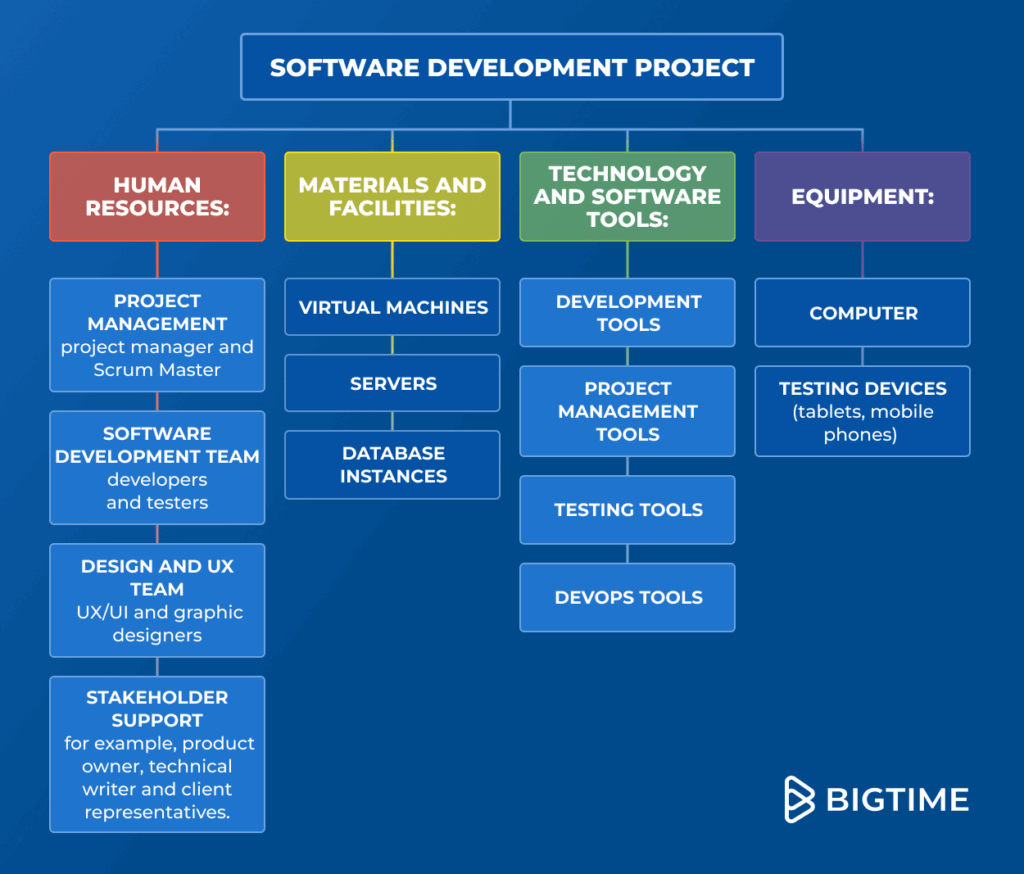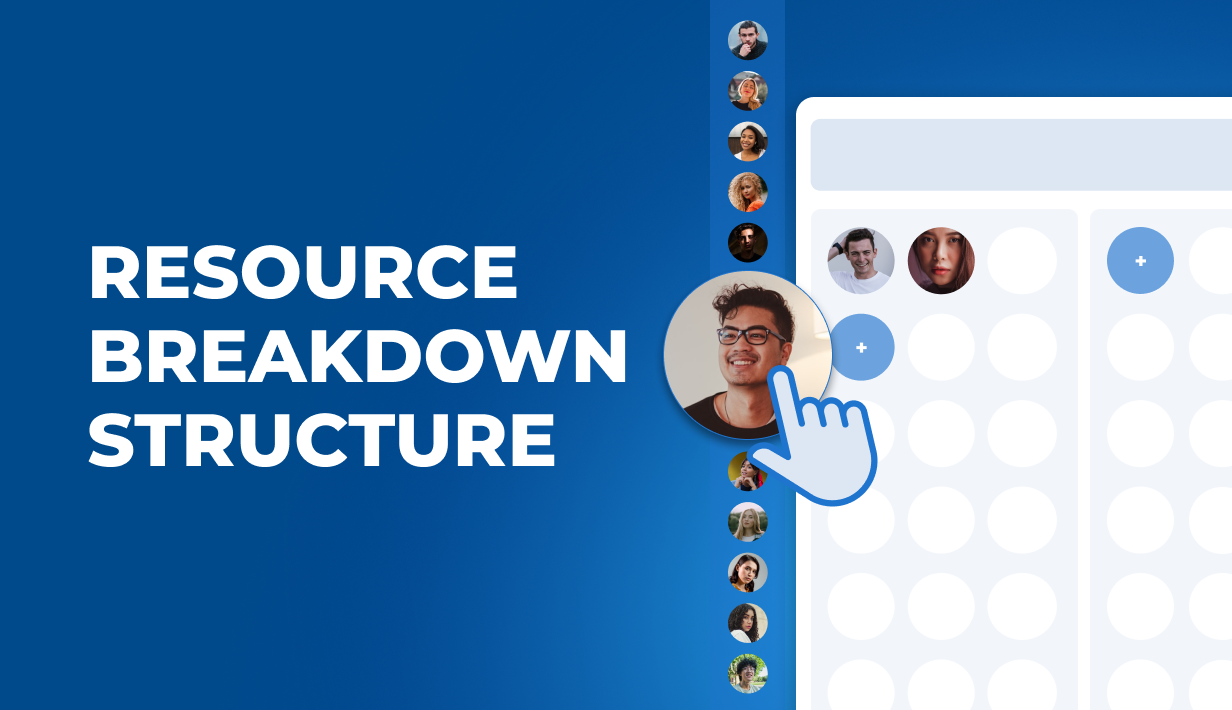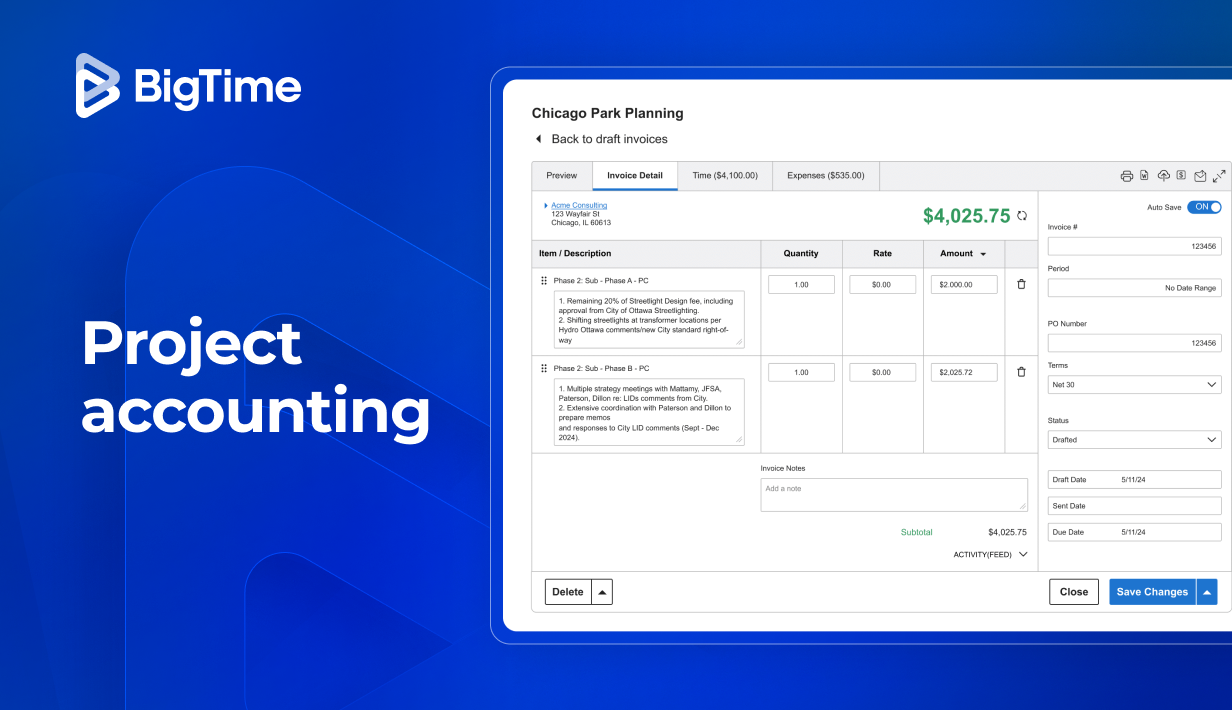Your project is as good as your employees are. But what if their skills and capacity are unclear? In that case, the success of your project can also be doubted. Fortunately, resource breakdown structure can change that.
Resource breakdown structure (RBS) in project management is exactly what you need to keep a close eye on your employees, their work and, consequently, project progress. In this article, we’ll explore how to use that technique to make the most of your employees’ time with flawless scheduling, planning and monitoring that doesn’t take days to complete.
In this article, we’ll answer the following questions:
- What is a resource breakdown structure (RBS)?
- Who is responsible for creating it?
- What are the benefits of making an RBS?
- How to make a resource breakdown structure?
What Is a Resource Breakdown Structure (RBS)?
A Resource Breakdown Structure (RBS) is a bird’s eye view of all the resources required to execute a project. In RBS, the resources might be divided into several categories, depending on the type of project. Those usually include: people (categorized by role, skill set, or available capacity), equipment, materials, services, and facilities.
While resource breakdown structure might seem like a simple list at first, it is much more than that. The RBS provides a structured view of resource types, breaking them down into increasingly detailed levels. As a result, this hierarchical framework facilitates planning, estimating, tracking, and resource allocation, making the process much more manageable.
Who Is Responsible For Making a Resource Breakdown Structure?
Since resource breakdown structure is typically made for a single project only, the project manager is usually the person responsible for creating it due to their extensive knowledge of the project scope and people responsible for its execution. However, in some cases involving shared resources, project managers might want to consult with other team leaders or even executives to ensure that their projects do not use overlapping (or worse – overbooked) resources. If your company has a specific person that can track resource utilization (for example, a resource manager), their help could also streamline the process.
Why Is Resource Breakdown Structure Important?
An effective resource breakdown structure serves as more than just an overview of all project resources – it is the key to a successful project.
In companies aiming to make the most of their project portfolio management, the RBS process is the key to balancing workloads without causing schedule conflicts or missing deadlines. If your business often faces overlapping allocations and, consequently, delivery issues, the resource breakdown structure can help you organize resources, structure your planning process, avoid common pitfalls, and improve team morale with error-free assignments. Everybody benefits!

What Are The Benefits of a Resource Breakdown Structure?
The benefits of resource breakdown structure can be felt throughout the organization. They include:
- Improved communication. With RBS, cross-departamental and cross-team cooperation is much easier. This process helps every manager see resource availability and avoid planning errors, regardless of the circumstances.
- Better capacity planning. No benched specialists or overworked senior employees. RBS helps companies master their workload management without hours spent on the process.
- Quicker planning process. With a structured approach to identifying and assigning tasks, managers can spend less time on the administrative work, and more on making critical decisions.
- Avoiding errors. Your team is working overtime? The assigned employee is out of office? Your favorite specialist is supposed to be working on two projects at the same time? Not anymore – resource breakdown structure can help you avoid such problems ahead of time.
- Improved resource forecasting. Don’t leave your team in the dark – with RBS, you can clearly see their future assignments and plan them with no errors. It’s the first step towards proactive risk management.
How To Make a Resource Breakdown Structure?
Any resource manager knows that assigning names to tasks is not enough in project planning – and it’s the resource breakdown structure that makes the difference between a successful plan and a complete disaster.
Resource breakdown structure is all about working with realistic assumptions for the project and resource allocation – first, for its scope, then, for the company’s ability to deliver it. As a result, it is a tool that allows project managers to get a complete overview of what’s to come – and compare that with the plans of others. Here’s how to approach that challenge.
When Should Project Managers Create a RBS?
Resource breakdown structure should be created before the project starts – or in its planning stage. This allows project managers to determine what time is needed to complete individual tasks, and what skills and resources will help them accomplish their goals.
Key Elements of Resource Breakdown Structure
Before you jump into creating a resource breakdown structure for your project, you need to understand its basic components. They will remain unchanged regardless of the type of the project you are working on, to help you with a single simple goal: organizing and tracking your resources without missing a single deliverable.
A perfect resource breakdown template should include:
- Hierarchical organizational structure, usually created as a tree diagram. This type of visualization in RBS divides resources into basic categories (such as human resources, materials, technologies, and more) and breaks them down from the highest-level categories to individual components.
- Human resources, including both full-time and part-time employees, consultants, managers, and any support staff.
- Materials necessary for project execution, or physical resources, such as office supplies, raw materials, components, parts, etc.
- Equipment and machinery, or any tools, machines and vehicles your project team might use. In professional services companies, this category is often limited to electronic devices or omitted altogether.
- Technology. This category encompasses both software and specialized hardware, such as licences and digital tools.
Naturally, the contents of each category might differ depending on the industry, the type of project or the state of your internal project planning processes. To avoid confusion at the later stages of the project, define each category separately with key stakeholders to ensure all the right resources will have a place on your final list.
Resource Breakdown Structure Step by Step – A Complete Guide
Still wondering how to make a resource breakdown structure? It’s time to categorize resources and go through the process step by step and get a bigger picture of your resource planning.
Step 1: Outline the project scope
Let’s start with the basics, or with your project itself. Break it down into deliverables, and the deliverables into individual project tasks to learn exactly what your project needs to be successful. Then, estimate the time and maximum cost of each step. If you are aware of any other constraints you need to work with, such as maximum rates or minimum profitability, this is the time to analyze them, too.
Step 2: Identify the required resources
Are you sure your team really has what it takes to complete the project? It’s time to confirm that. Based on the scope you just defined, outline the perfect resources for each deliverable. Remember to identify the necessary resources in all the categories that apply to your project, including people, material resources, equipment and technologies. Keep in mind that not all of them have to be viable for your organization!
Step 3: Divide resources into categories
If the list of necessary resources is already long enough, you can start dividing them into categories. In general, organizations tend to organize their resources by categories. However, some industries, such as IT or marketing, can also benefit from categorizing them by project phase.
Additionally, remember that, in some cases, creating subcategories might also be beneficial for your analysis. For example, in software development projects, the main groups might be further divided by skills, certifications, or knowledge of particular technologies to give project managers a better overview of the necessary project resources.
Step 4: Start resource management
It’s time to turn the resource breakdown structure into actionable insights. Analyze the utilization rates and skills of your team members, check their availability for the months and weeks to come and try to assign them to particular deliverables. Remember that their time is not the only thing you need to be mindful of. Other factors, such as project budget, time offs and existing allocations should also be a part of your analysis to prevent schedule conflicts and other unpleasant surprises later on.
Step 5: Review, optimize and implement
Once your resource allocation is ready, share your findings with other managers and project stakeholders to avoid overbooking or other problems. Their insights might help you identify problems and gaps and ensure all critical factors were accounted for.
To make things easier, you can use resource management software to share your plans with your colleagues. If you choose BigTime, they will see the availability of your team members live, and they will see the updated plans whenever a change is made. It can also help you with monitoring resource utilization and creating a work breakdown structure. It’s that simple!

Resource Breakdown Structure – Example
It’s easier to get a better perspective on the RBS with its visual representation – or an example of resource breakdown structure tree diagram.
Imagine you’re managing a custom CRM software development project. The final deliverable is a fully functional CRM system tailored to a client’s sales operations.
The RBS for this project can be broken down into several major resource categories—each with detailed subcategories. Those include:
Human resources:
- Project management – project manager and Scrum Master
- Software development team – developers and testers
- Design and UX team – UX/UI and graphic designers
- Stakeholder support – for example, product owner, technical writer and client representatives.
Materials and facilities:
- Virtual machines
- Servers
- Database instances
Technology and software tools:
- Development tools
- Project management tools
- Testing tools
- DevOps tools
Equipment:
- Computers
- Testing devices (tablets, mobile phones)
This resource breakdown structure example can also be created in a visual form of a tree diagram:

As you can see in the example above, the main goal of the project is displayed at the very top of the tree, while components contributing to the final products are categorized below. Individual branches represent different resource categories defined for a particular project or a company. The result? A complete overview of all the resources necessary to complete the assignment.
If you don’t have access to any visual tools, you can also successfully create a resource breakdown structure in an Excel spreadsheet. A Resource Breakdown Structure (RBS) table in Excel includes key columns such as Resource ID, Category, Type, Description, Quantity, Unit Cost, Total Cost, Availability, and Status. Each row represents a specific resource needed for the project, organized by type and purpose. This structure helps track resource requirements, costs, and responsibilities in a clear, sortable format.
After your resource breakdown structure template is complete, you can start to analyze the actual resource utilization, financial resources and start project scheduling. You have everything you need to complete your project successfully!
Create and Manage Resource Breakdown Structure with BigTime
Tired of doing all of this with just Excel spreadsheets, or worse – a pen and a piece of paper? Fortunately, the best resource management software is here to help you with resource breakdown structure in just minutes.
BigTime is a resource management tool and a project management software tailored to the needs of project managers from all the industries. Whether you’re coordinating a construction project, creating a marketing campaign or developing new software, BigTime can help you:
- See all of your employees, their skills and availability in seconds – time offs included
- Test out different scenarios with draft allocations and projects.
- Keep an eye on the project budget. With wages and hourly rates included in the system, we’ll show you exactly how much it will cost you to complete an assignment or the entire project.
- Check what other managers are doing – we will update your plans whenever they make a change to theirs
Sounds good? We’d love to show you more! Book a demo with one of our advisors and change your project management with BigTime in under 30 days!



